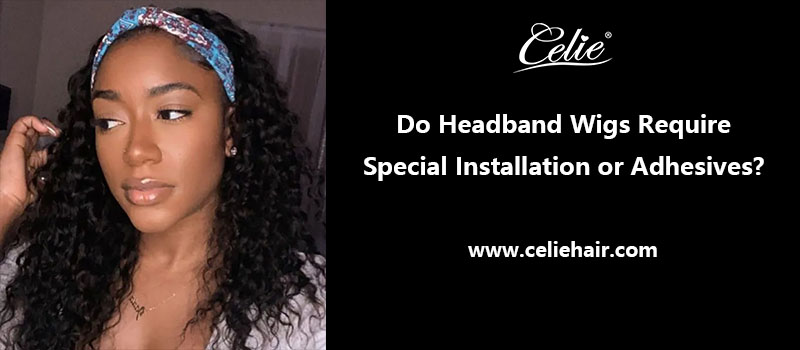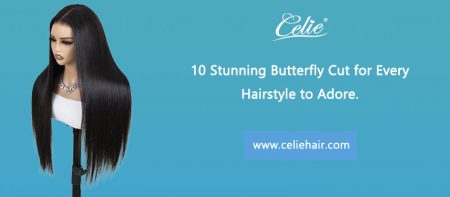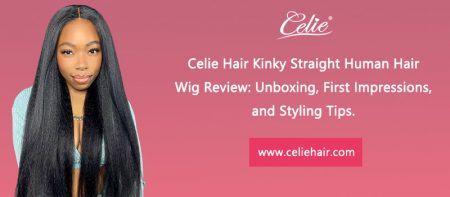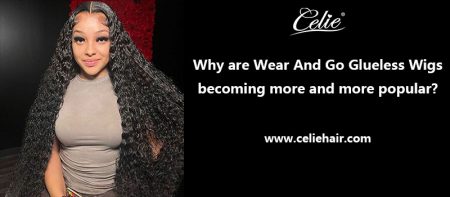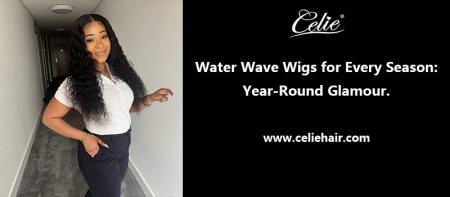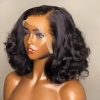Headband wigs have been gaining popularity in recent years as a convenient and versatile option for those looking to change up their hairstyles. These wigs are known for their ease of use and natural appearance, making them a favorite among wig enthusiasts and beginners alike. One of the key selling points of headband wigs is that they don’t require the use of special installation techniques or adhesives, making them a hassle-free alternative to traditional wigs. In this article, we’ll delve into the world of headband wigs, exploring their features, benefits, and how to wear them without the need for special installation or adhesives.

Installation of headband wigs.
One of the most significant advantages of headband wigs is that they do not require special installation techniques or adhesives. Unlike traditional wigs, which often involve the use of wig glue, tape, or sew-ins to secure them to your scalp, headband wigs are a “ready-to-wear” option. Here’s how to install a headband wig:
1. Prepare your natural hair.
Before putting on a headband wig, you’ll need to prepare your natural hair. This typically involves combing or brushing your hair to ensure it’s smooth and free of tangles. You can also use hairpins or clips to secure any loose strands or create a flat base for the wig.
2. Put on the headband wig.
To put on a headband wig, follow these steps:
a. Slip the wig over your head, positioning it at the back of your head.
b. Make sure the headband portion of the wig is resting securely on your forehead.
c. Adjust the wig to ensure a snug fit. You can use the adjustable straps or combs that come with some headband wigs to secure them in place.
d. Style the headband portion of the wig as desired. You can wear it flat against your forehead or push it slightly back for a more natural look.
3. Blend your natural hair.
The key to making a headband wig look natural is to blend your natural hair with the wig. Here’s how:
a. Comb or brush your natural hair to ensure it’s smooth and well-matched in texture and color with the wig.
b. Style your natural hair around the perimeter of the wig to create a seamless transition. You can use curling irons, flat irons, or other styling tools to achieve the desired look.
c. Use hair accessories or headbands to cover the seam between your natural hair and the wig, enhancing the overall appearance.
Adhesive-free beauty.
One of the primary reasons people opt for headband wigs is the freedom from adhesives. Traditional wigs often require the use of adhesive products like wig glue or tape to keep them in place. While these adhesives can be effective, they can also be messy, time-consuming, and potentially damaging to your natural hair and scalp.
Here are some of the benefits of choosing an adhesive-free headband wig:
1. Protecting your natural hair.
Adhesive products can weaken and damage your natural hair over time. The constant use of glue or tape can lead to breakage and thinning of your hair, which is a concern for many wig wearers. Headband wigs eliminate this risk, as they don’t require any adhesive application to stay secure.
2. Saving time.
Traditional wig installation with adhesives can be a time-consuming process. It often involves waiting for the adhesive to dry and can be fussy to get just right. In contrast, putting on a headband wig is a quick and hassle-free process, saving you valuable time in your daily routine.
3. Easy removal.
Removing a headband wig is as simple as taking off a regular headband. You can do it in seconds without the need for special removers or solvents to dissolve adhesive residues. This ease of removal is not only convenient but also gentle on your scalp and natural hair.
4. Minimal mess and residue.
Adhesives can leave sticky residue on your scalp and hairline, which can be challenging to remove and may require additional products. Headband wigs leave no residue, allowing for a cleaner and more comfortable experience.
Styling options.
Headband wigs offer a wide range of styling possibilities without the need for adhesives. Here are some ways you can style and customize your headband wig:
1. Change the headband.
One of the easiest ways to switch up your look with a headband wig is to change the headband itself. Headbands come in various colors, materials, and styles, allowing you to match your outfit or mood effortlessly.
2. Curl or straighten.
You can use heat styling tools like curling irons or flat irons to curl or straighten your headband wig. Just be sure to use heat protection products to prevent damage to the wig’s synthetic or human hair fibers.
3. Add accessories.
Enhance the appearance of your headband wig by adding accessories such as hairpins, clips, or decorative headpieces. These accessories can add flair and individuality to your hairstyle.
4. Braid or twist.
Experiment with different braiding or twisting techniques to create unique and eye-catching hairstyles. These styles can be achieved without adhesives, making them ideal for headband wigs.
Maintenance and care.
While headband wigs are relatively low-maintenance compared to traditional wigs with adhesives, they still require proper care to ensure longevity and maintain their natural appearance. Here are some tips for maintaining your headband wig:
1. Brush or comb regularly.
To prevent tangles and maintain the wig’s smooth texture, brush or comb your headband wig regularly, especially after wearing it. Use a wig brush or wide-tooth comb designed for wig maintenance to avoid damaging the fibers.
2. Wash as needed.
Headband wigs should be washed periodically to remove dirt, oil, and product buildup. Follow the manufacturer’s instructions for washing and use wig-specific shampoos and conditioners.
3. Store properly.
When not in use, store your headband wig on a wig stand or in its original packaging to help maintain its shape and prevent tangling.
4. Protect from heat.
Avoid exposing your headband wig to excessive heat from styling tools or direct sunlight, as this can damage the synthetic or human hair fibers.
What difference between the headband wig and half wig?
Headband wigs and half wigs are similar in that they both cover only a portion of your head, leaving your natural hair exposed at the front. However, there are some key differences between these two types of wigs:
Attachment method:
Headband wigs: Headband wigs, as the name suggests, come with an attached headband. The headband is used to secure the wig in place. You simply slip the wig over your head and position the headband in front, securing it like you would a regular headband.
Half wigs: Half wigs are typically attached using combs, clips, or adjustable straps. These combs and clips are designed to grip onto your natural hair, securing the wig in place. Some half wigs also have drawstrings or other adjustable features to ensure a snug fit.
Coverage:
Headband wigs: Headband wigs cover the back and sides of your head, leaving the front portion of your natural hair exposed. The headband is a prominent feature and serves both as a decorative element and a way to hold the wig in place.
Half wigs: Half wigs, as the name suggests, cover roughly half of your head. They typically start around the crown area and extend to the back, leaving more of your natural hair exposed at the front compared to headband wigs.
Comfort:
Headband wigs: Headband wigs are known for their comfort. Because they don’t cover your entire scalp, they allow for better airflow and reduce the risk of overheating. The headband itself is often lined with soft materials for added comfort.
Half wigs: Half wigs can also be comfortable to wear, but the level of comfort may vary depending on the specific design and materials used.
Attachment security:
Headband wigs: Headband wigs are generally easy to put on and secure with the headband. They are less likely to shift or come loose during wear.
Half wigs: The attachment method for half wigs may require more careful placement and adjustment to ensure a secure fit. Some users may prefer the added security of combs, clips, or straps.
How to measure the length of headband wigs?
Measuring the length of a headband wig is an essential step to ensure you get the desired hair length and style. Here’s how to measure the length of a headband wig accurately:
Tools you’ll need:
A soft measuring tape (flexible, non-stretchy)
A flat surface, such as a table or countertop
A wig stand or mannequin head (optional, but it can be helpful)
Step-by-step guide:
Prepare the wig:
Lay the headband wig flat on a clean and flat surface, such as a table or countertop.
If you have a wig stand or mannequin head, you can place the wig on it to make measuring easier. Ensure that the wig is properly positioned on the stand or head.
Comb the wig:
Gently comb or brush the wig to ensure that the hair fibers are smooth and not tangled. This will help you get a more accurate measurement.
Locate the starting point:
Identify the starting point for measuring. This is usually the top of the wig cap or the point where the hair begins. It’s essential to measure from this point for consistency.
Position the measuring tape:
Place the beginning of the measuring tape at the starting point you identified in the previous step. Make sure it’s firmly anchored.
Measure the length:
Carefully extend the measuring tape along the hair strands, following the natural flow of the hair. Ensure that the tape is straight and not twisted or bent.
Measure all the way to the end of the hair or the point where you want to determine the length.
Take the measurement:
Once you’ve measured the entire length, note down the measurement in inches or centimeters, depending on your preference and the units provided by the wig manufacturer.
Check for accuracy:
Double-check your measurement to ensure its accuracy. It’s a good practice to measure more than once to be certain you have the correct length.
Record the length:
Record the measured length for reference when selecting or discussing wig options.

Don’t think, just do.
Headband wigs are a game-changer in the world of wig-wearing, offering a hassle-free and adhesive-free alternative to traditional wigs. With their ease of use, versatility, and natural appearance, headband wigs have become a popular choice for individuals looking to change their hairstyle without the fuss of adhesive application and complex installations. Whether you’re new to wigs or a seasoned wig enthusiast, headband wigs are worth considering for their comfort, convenience, and beautiful results. So, if you’re looking to switch up your look without the need for special installation or adhesives, a headband wig might be the perfect solution for you.

